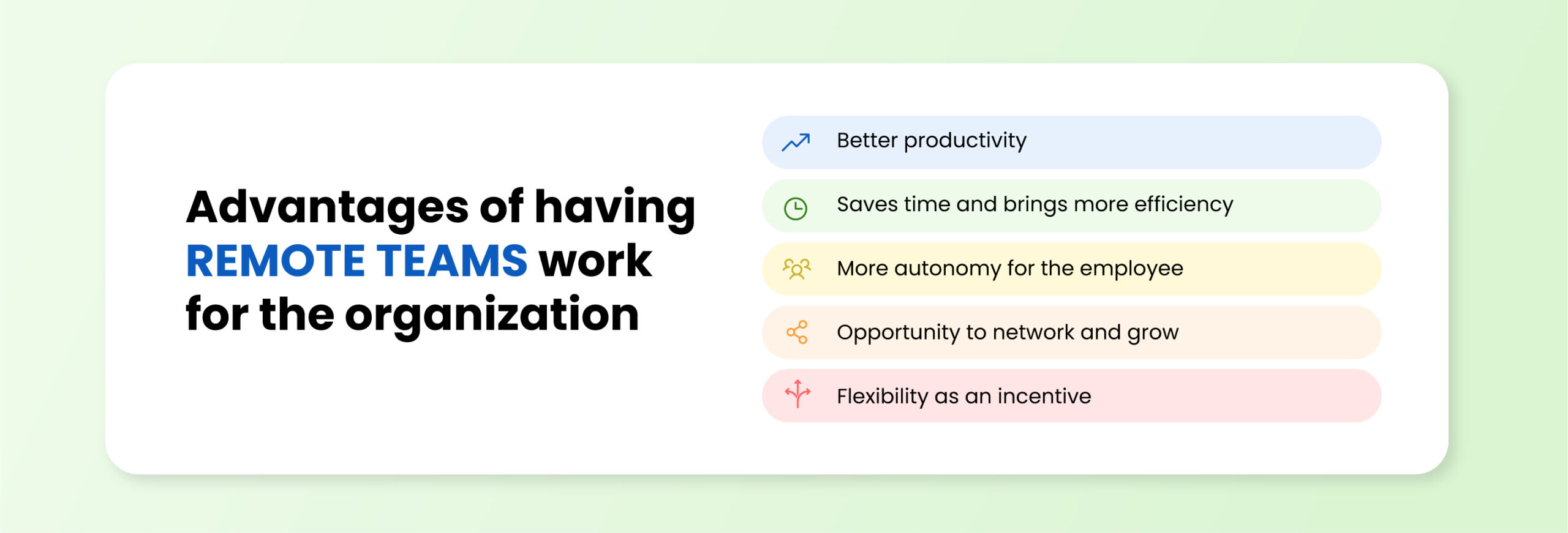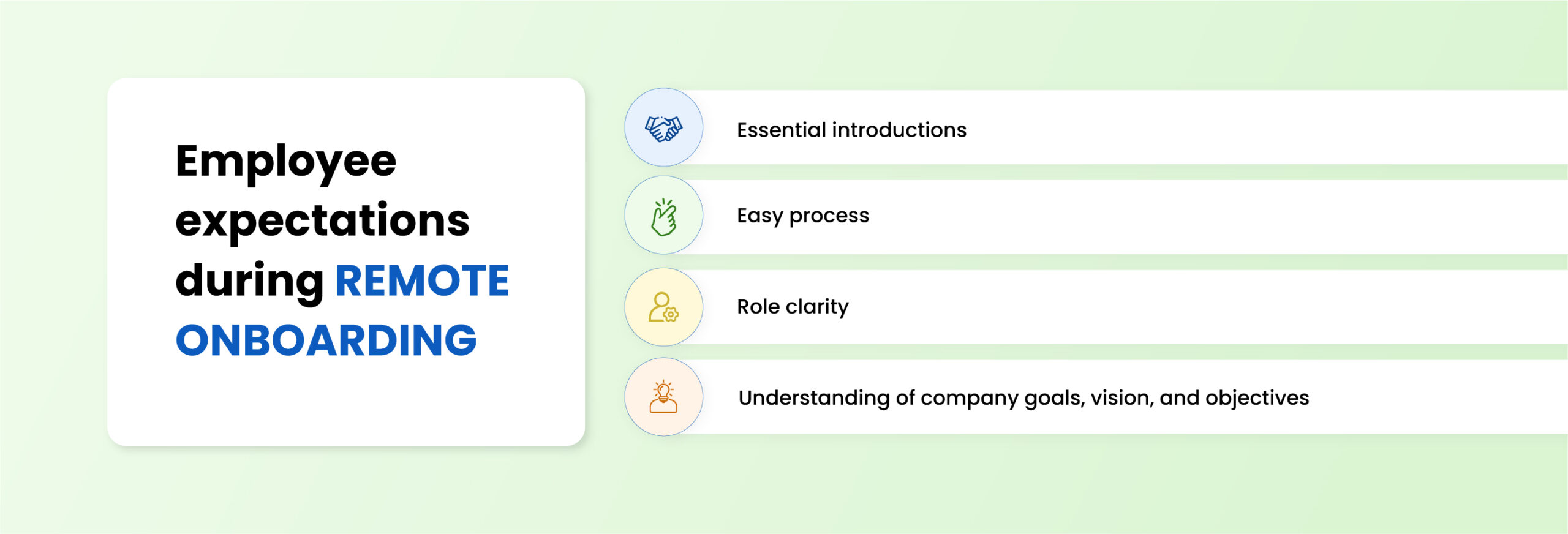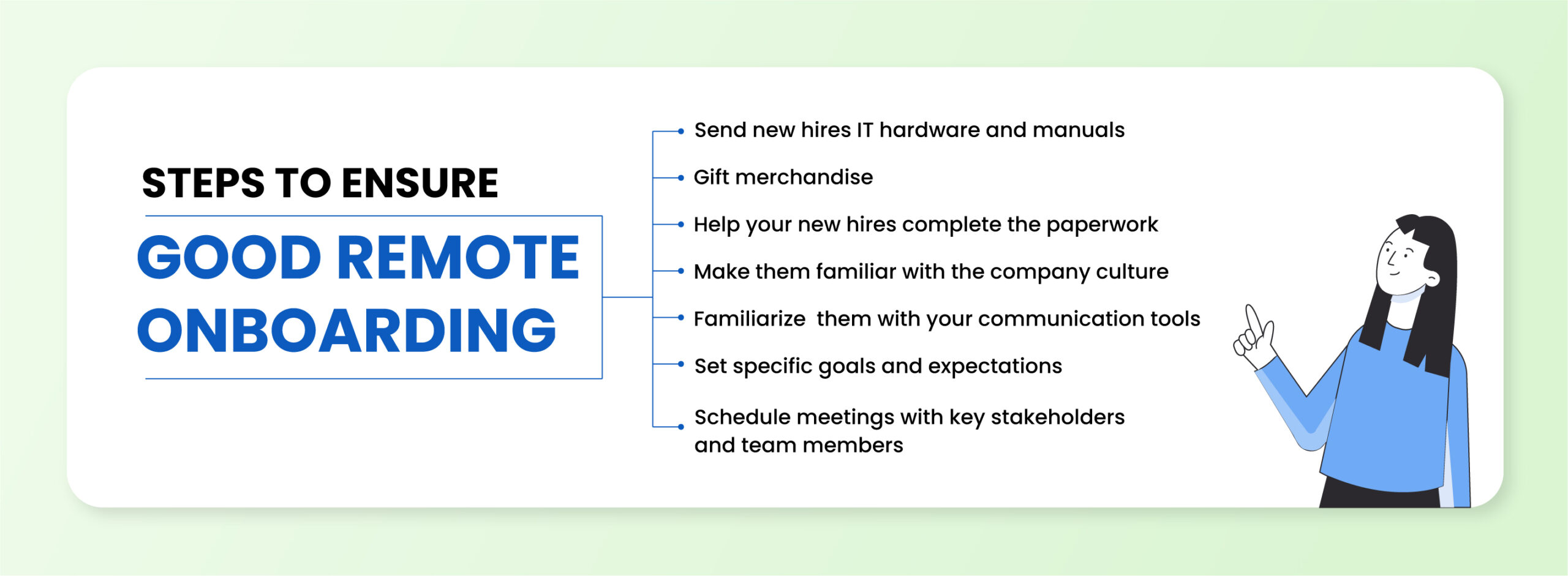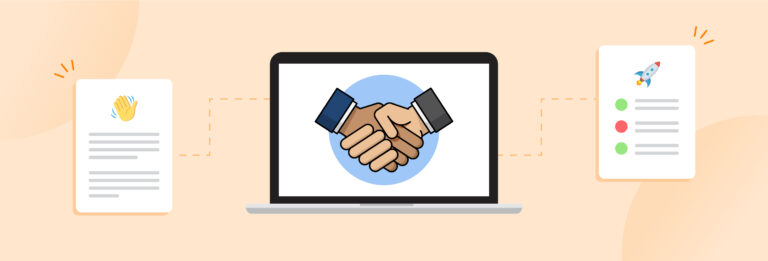The last couple of years has seen a gradual departure of the corporate world from the traditional work model to adopting the new trends. Remote and hybrid work models are new buzzwords in this era of a massive shift.
The evolved workforce demands flexibility, better work-life balance, and freedom from the stringent tradition of micromanagement. The remote working model has proven to accommodate each of those demands and attracts the best talents.
But remote working comes with its own set of challenges – one is onboarding employees remotely.
So what should you do to make the best of this reasonably new norm?
In this blog, we will discuss the benefits of remote onboarding and the best practices to follow for the best results.
What are the advantages of having remote teams?

According to a survey conducted by Owl Labs, 55% of the participants say they work more hours remotely than they do at an onsite office, with 32% stating they would consider quitting if they could not work remotely. Here are the advantages remote teams have for themselves, and for the organization.
Better productivity
A traditional on-site work environment can get distracting or stressful for some of your employees. On the other hand, the remote working model gives them more brain space to focus better in a stressless environment.
The newfound flexibility of their work schedule also encourages them to complete the most complicated or important tasks at their most creative hours, be it early morning or late night. They can also choose an inspiring environment to focus better on their work, which is missing in an on-site work setting.
Saves time and brings more efficiency
On-site work settings are prone to impromptu or unimportant meetings. While meetings are essential to communicate intricacies, ideas, and deliverables, several of them in a week can hamper the productivity of your employees.
On the other hand, in a virtual setting, meetings are held at a specific time, letting the employees work on their projects. Besides, remote employees don’t face burnout as they don’t need to fill an eight-hour block of time with work. This allows them to make a meaningful impact on their tasks when they feel the most productive. Consequently, there’s a boost in efficiency which results in things getting done quicker.
More autonomy for the employee
Besides the work-life flexibility, a remote work setting gives your workforce a chance to further prove their leadership abilities with expanded autonomy and responsibility. Working remotely, sometimes, allows them to manage their priorities and effectively showcase their ability to complete projects without micromanagement. They would bring more high-quality work, meet deadlines, and have incentives to bring new ideas to the table.
Opportunity to network and grow
An on-site work setting leads to missing out on many professional development and networking opportunities. Many may have personal commitments outside their work hours, making it difficult for them to prioritize professional development.
With a remote work model, your employees can work from any location, which helps them manage their productive hours for tasks and the rest to pursue professional development outside of that time when it fits their schedule. With greater flexibility in schedule, they can hone their professional skills and excel within your organization. Attending networking events could also result in new connections and clients for your business.
Flexibility as an incentive
Remote working models imply that the company trusts its employees and they’d get quality work done in time. It also shows that the company isn’t fond of micromanaging its employees and values the human side of the business. Remote work provides them with a healthy work-life balance, fostering loyalty and an urge to prove themselves to continue with the luxury.
What do employees expect when they are onboarded remotely?

The global workforce has evolved. Naturally, their expectations from their future employers have transformed as well. To onboard remotely, it is essential to understand their expectations. Here’s what the employees expect when onboarded remotely:
Easy process
Your new employees will create an image of your employer’s brand right from the start. So to facilitate a positive one, your onboarding process must be smooth and hassle-free. The ability to conduct every step of onboarding efficiently and complete it on a high note is what sets you apart as an employer.
Essential introductions
The evolved workforce expects to be valued and welcomed when they start working for a new organization. Introducing the new hires to their respective team members is a good starting point to familiarize them with the work environment. It will be an ice breaker for them to bond and build a synergy quickly. Additionally, while onboarding employees remotely, such an approach would make them feel welcome.
Role clarity
Your workforce wants to be a proactive part of the organization’s growth and to start performing well right from the start. To achieve that, they must understand their role correctly. For the employees, you onboard remotely, make sure to hold thorough sessions explaining their job roles.
Understanding of company goals, vision, and objectives
Your new hires need to understand the company’s vision and mission early on. Thus, when onboarding employees remotely, providing them with the right resources to explain company objectives is of utmost importance.
What are the steps to ensure remote employees get onboarded in the best way?

Send new hires IT hardware and manuals
Arrange necessary pieces of equipment like computers and other hardware well ahead of their onboarding day. While onboarding employees remotely, you must coordinate with the equipment shipping and logistics team to put a standard process in place. That way, the equipment will reach the new hires before they start their job. This will give your employees the chance to familiarize themselves with the system. It will also keep your day 1 agenda on track.
Gift merchandise
Gifting new employees company merchandise might seem like a small gesture, but it will seem thoughtful and help break the ice of awkwardness on the first day and make them feel at ease.
A set of company swag will make the new hire feel like a part of the team. It will also help you establish your brand as a workforce-oriented employer. The swag set can include –
- A soft shirt
- A notebook and pens
- Snacks
- A coffee cup or mug
- A motivational book
Help your new hires complete the paperwork
Making your new hires go through several documents and sign them is a time-consuming task. To onboard remotely efficiently, it is an excellent practice to help them complete the necessary paperwork.
You can consider sending the offer letter, agreement, and other bureaucratic documents via email and letting your new hires sign and send them over digitally.
Make them familiar with the company culture
It is essential that your remote employees feel just as much of a part of your company’s culture as your on-site employees. Providing them with all the necessary resources will quickly acquaint them with the culture and make them feel at home. Here are some things you can share:
- Infographics and video content
- Employee handbook in digital format
- Presentations on your company values
- Videos from all-hands meetings
Familiarize them with your communication tools
Keeping the workflow consistent is great for your new hires to become familiar with the company’s communication tools. When onboarding employees remotely, describe the best ways to contact team members and how to troubleshoot communication technology. You can also provide your new hires with manuals on how to set up their communication tools like company email, group messaging tools, video conference software, etc.
Set specific goals and expectations
You can’t let your new employees feel bored, nor do you want them stressed on their first day. So, to keep the day one agenda going smoothly, it is crucial to establish a workflow system. Develop and share a task calendar after new hires’ training and onboarding sessions. Remember to assign short but manageable goals for their initial days. Plan their long-term goals as well.
Schedule meetings with key employees and team members
The primary point of onboarding is to help the new employees get started with their new jobs and settle in with the teams. So it is very important, especially if you onboard remotely, to introduce the new hires to their respective teammates. 1:1 meetings or group sessions can work, depending on the job position. On their 1st day, new employees should meet with:
- Respective teammates
- A direct supervisor or manager
- Other departments they will work closely with
The role of AI-powered tools in making onboarding seamless
Employee onboarding is an essential factor of employee recruitment and has a long-term impact on employee experience. So making the process as convenient, effective, and fast as possible should be one of the prime priorities.
Many companies worldwide are turning to artificial intelligence to build an impeccable employee onboarding strategy. From sharing appropriate resources to simplifying tasks and even providing feedback, AI is the future to make virtual onboarding smoother.
Importance of providing a highly supportive environment through technology
Maintaining a steady workflow after onboarding new team members requires a support plan for each step – be it paperwork or using company tools. Leveraging technology can help you to provide all-around assistance to your new hires. With e-inductions, your remote hires will not miss anything without having to commute to the workplace for their onboarding.
An AI-powered onboarding software system will offer you interactive chatbots equipped to address the queries of your new employees. With a centralized platform, they can network and bond with their teammates even before onboarding which will help build a rapport. Such initiatives will create a supportive environment, helping them to learn their jobs quickly.
Automation
HR departments are responsible for handling most of the onboarding process. Handling all the necessary operations and organizing collected information manually is very likely to be overwhelming, especially if you have conducted a bulk recruitment drive.
But AI-powered onboarding solutions come with efficient automation of many repetitive but mandatory tasks like handling paperwork and collecting employee information. This saves a lot of time for HR, which can be invested in strategic planning to improve employee wellness.
Streamlining
From background verification and documentation to payroll formalities, AI-powered onboarding tools help streamline each step to onboard remotely. Leveraging the analytics provided by best-in-class onboarding software, you can bring balance between your recruitment, onboarding, and training programs. The pulse surveys and comprehensive reports help you personalize the onboarding experience based on different employees. You can also identify their skills and strengths and direct them to job roles where they can leave the most impact.
Fostering better collaboration
AI-powered tools come with a centralized platform and give new employees the chance to interact with their co-workers and get to know them better. These platforms are collaborative, where teams worldwide can work on projects and ask for assistance from their teammates.
The comprehensive dashboards make it easy to keep track of the deadline, priorities, and progress. Using such tools paves a smooth path for your new hires to learn from the seniors and contribute to projects from the beginning.
Conclusion
Staying relevant in a highly competitive market will require companies to strive to adopt new technologies daily. But thanks to rapid technological advancements, the way companies see technology is also rapidly changing. So opting for an efficient and cutting-edge AI-powered automated system is your HR department’s best friend to onboard remotely and stay on top of their game.
Companies globally have gone through mass attrition in the last couple of years and faced a severe dent in the talent pool. In such a competitive talent acquisition sector, retaining the best talents in your organization is severely challenging without leveraging the right technology.
That’s where Leena AI’s complete onboarding automation can help you.
It has a user-friendly interface to accommodate even those not well-versed in technology. The intuitive dashboard will make it easy for you to track and monitor your new employees’ progress. The intelligent and interactive chatbots promptly answer questions of your new employees, and with surveys and analytics reports, you can always identify gaps and make improvements.
For an efficient and effective onboarding experience, choose Leena AI today.






